Southeast Asia Travel Itinerary 2 Weeks can be an amazing snapshot of this diverse region, offering a taste that will leave you wanting more. Planning a 2-week trip to Southeast Asia might seem daunting, but with SIXT.VN, you can discover the best destinations, enjoy seamless airport transfers, and book accommodations with ease. Maximize your journey with our expert travel advice, allowing you to experience the culture, cuisine, and stunning landscapes of Southeast Asia. Curious about creating the perfect Southeast Asia travel plan? Keep reading to discover some amazing options.
1. Can I Really Experience Southeast Asia with Only a 2-Week Travel Itinerary?
Yes, you can have an incredible experience with a 2-week Southeast Asia travel itinerary, but it’s important to be realistic. Instead of trying to see everything, focus on a few key destinations to truly immerse yourself in the local culture. According to a study by the Tourism Authority of Thailand in 2023, tourists who focus on fewer destinations report higher satisfaction rates (Tourism Authority of Thailand, 2023). With careful planning, you can create an unforgettable trip.
1.1. What’s Realistic in a 2-Week Southeast Asia Travel Itinerary?
A realistic 2-week Southeast Asia travel itinerary focuses on one or two countries, allowing for deeper exploration. Trying to visit all eleven countries would result in a rushed and superficial experience. Instead, select a region or theme that interests you, such as the cultural hubs of Thailand and Cambodia or the beaches and islands of the Philippines. This targeted approach ensures a more fulfilling and less stressful trip.
1.2. What are Some Themes for a 2-Week Southeast Asia Travel Itinerary?
Consider these themes for your 2-week Southeast Asia travel itinerary:
- Cultural Immersion: Explore the temples and historical sites of Thailand and Cambodia.
- Island Getaway: Discover the beaches and dive sites of the Philippines.
- Culinary Adventure: Indulge in the diverse cuisines of Vietnam and Malaysia.
- Nature and Adventure: Trek through the jungles of Borneo or the rice terraces of Vietnam.
1.3. How Can SIXT.VN Help Plan My 2-Week Southeast Asia Travel Itinerary?
SIXT.VN offers comprehensive travel services to make your 2-week Southeast Asia travel itinerary planning easier. From airport transfers to hotel bookings and guided tours, SIXT.VN ensures a seamless and stress-free experience. Our expert travel consultants can help you customize your itinerary to match your interests and preferences, ensuring you make the most of your limited time. Contact us at Hotline/Whatsapp: +84 986 244 358 or visit our website: SIXT.VN.
2. What is the Best Time to Plan My Southeast Asia Travel Itinerary for 2 Weeks?
The best time for your Southeast Asia travel itinerary depends on the specific region you plan to visit. Southeast Asia has distinct wet and dry seasons, which vary across different countries. Traveling during the dry season is generally recommended to avoid adverse weather conditions, ensuring a more enjoyable experience.
2.1. When is the Dry Season in Mainland Southeast Asia?
The dry season in mainland Southeast Asia, including Thailand, Laos, Cambodia, and Vietnam, typically runs from November to March. During these months, you can expect pleasant temperatures and minimal rainfall, making it ideal for exploring temples, cities, and natural landscapes. This period is also suitable for visiting most of the Philippines.
2.2. When is the Dry Season in Maritime Southeast Asia?
April to October is the best time to visit Bali and other parts of Indonesia, as well as the east coast of Malaysia. This period offers sunny skies and comfortable temperatures, perfect for beach vacations and water activities. Keep in mind that the weather can vary, so it’s always a good idea to check the forecast before you go.
2.3. What are the Benefits of Traveling During the Shoulder Season?
Traveling during the shoulder season (the transition between wet and dry seasons) can offer unique advantages. According to a report by the United Nations World Tourism Organization, shoulder seasons often provide a balance between good weather and fewer crowds (UNWTO, 2022). The landscapes are lusher and greener, and you may find better deals on accommodations and flights. However, with a 2-week Southeast Asia travel itinerary, sticking to the dry season minimizes the risk of weather-related disruptions.
2.4. How Can SIXT.VN Help Me Plan Around the Weather?
SIXT.VN provides up-to-date travel advice and local insights to help you plan your Southeast Asia travel itinerary around the weather. We offer flexible booking options and travel insurance to protect you from unexpected changes. Our team can assist you in choosing the best time to visit your desired destinations, ensuring a smooth and enjoyable trip. Visit SIXT.VN for more information.
3. What are the Top Southeast Asia Travel Itinerary Ideas for 2 Weeks?
There are several fantastic Southeast Asia travel itinerary ideas for 2 weeks, each offering a unique blend of culture, nature, and adventure. These itineraries are designed to maximize your experience while keeping travel times manageable. Whether you’re interested in exploring ancient temples, relaxing on pristine beaches, or immersing yourself in vibrant city life, there’s an itinerary to suit your preferences.
3.1. Thailand and Cambodia: A Balanced Mix
This 2-week Southeast Asia travel itinerary focuses on Thailand and Cambodia, offering a balanced mix of cities, nature, culture, temples, and beaches. Start in Bangkok, Thailand’s bustling capital, then head north to Chiang Mai before flying to Koh Samui for some beach relaxation. Conclude your trip with visits to Siem Reap and Phnom Penh in Cambodia.
3.1.1. What to See and Do in Bangkok?
Spend two action-packed days in Bangkok exploring iconic landmarks such as The Grand Palace, Khao San Road, and Chinatown. Visit the Damnoen Saduak Floating Market for a unique cultural experience. Indulge in the city’s delicious street food, and consider a traditional Thai massage for relaxation. End your days with an evening cruise on the Chao Phraya River, enjoying entertainment and a seafood buffet.
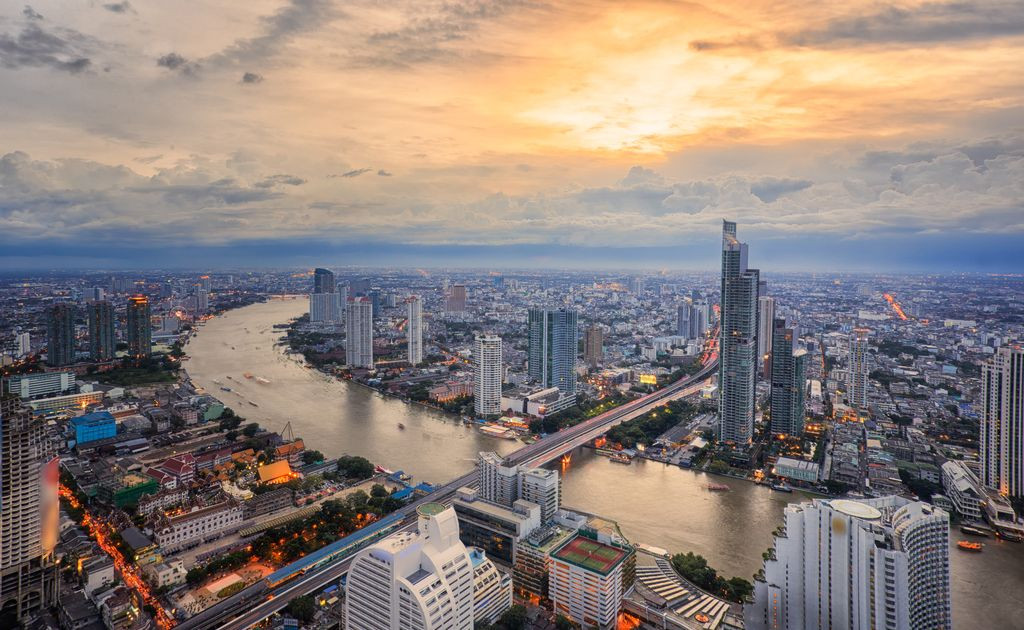 Bangkok City, Thailand buildings, river, and bridge
Bangkok City, Thailand buildings, river, and bridge
3.1.2. What to Experience in Chiang Mai?
Take a sleeper train from Bangkok to Chiang Mai for a more relaxed pace. Visit an elephant rescue sanctuary, go river rafting, and explore waterfalls. Immerse yourself in the local culture by attending a Muay Thai fight night and visiting the local markets and night bazaar. Chiang Mai offers a tranquil contrast to the bustling city of Bangkok.
3.1.3. How to Relax in Koh Samui?
Fly from Chiang Mai to Koh Samui to enjoy crystal-clear waters and white sand beaches. Spend your days swimming, snorkeling, or scuba diving. Explore cultural sights such as the 12m Golden Buddha at Wat Phra Yai Temple and the Fisherman’s Village. Koh Samui is perfect for relaxation and rejuvenation.
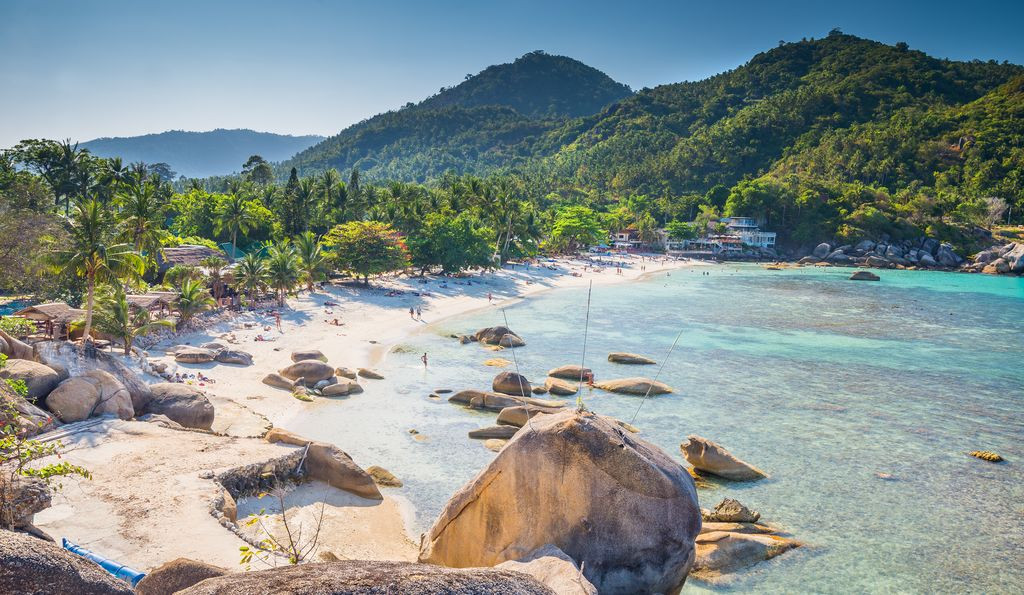 Crystal Beach in Thailand surrounded by trees and big rocks
Crystal Beach in Thailand surrounded by trees and big rocks
3.1.4. Why Visit Siem Reap?
Fly from Koh Samui to Siem Reap to visit Angkor Wat, the largest religious structure in the world and a UNESCO World Heritage Site. Explore the famous temples of Angkor Wat, Angkor Thom, and Bayon Temple. Dedicate a couple of days to exploring these incredible historical sites.
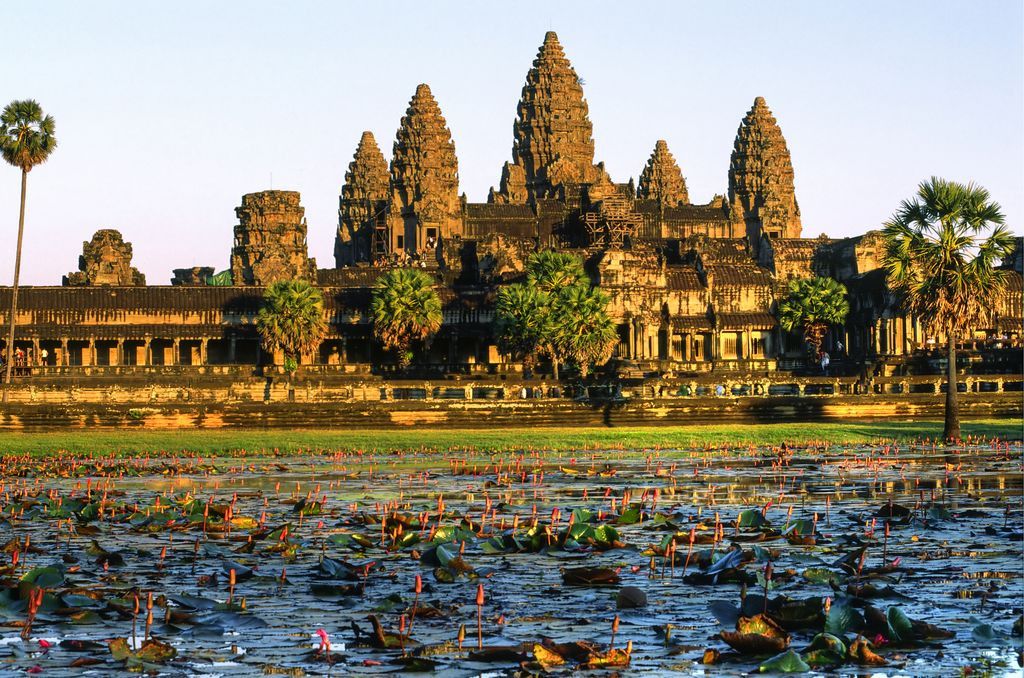 Angkor Wat temple and river with lotus flowers
Angkor Wat temple and river with lotus flowers
3.1.5. What to Learn in Phnom Penh?
Take a private bus from Siem Reap to Phnom Penh to learn about Cambodia’s history, including the Cambodian Genocide and the atrocities under Pol Pot. Visits to the S21 Prison and the “killing fields” of Choeung Ek are informative but somber experiences. From Phnom Penh, you can easily catch a flight back to Bangkok or your next destination.
3.1.6. Thailand and Cambodia Itinerary Summary:
- Days 1-2: Bangkok
- Days 3-6: Chiang Mai
- Days 7-9: Koh Samui
- Days 10-12: Siem Reap
- Days 13-14: Phnom Penh
3.2. Palawan, Philippines: An Island-Hopping Adventure
This Southeast Asia travel itinerary is ideal for beach and island lovers. Palawan consistently ranks as one of the best island destinations in the world, offering incredible dive sites, white beaches, secret lagoons, and crystal-clear waters. Begin in Puerto Princesa, then head to Sabang, Port Barton, El Nido, and Busuanga.
3.2.1. What to Do in Puerto Princesa?
Start your Palawan adventure in Puerto Princesa with a magical firefly-watching cruise on the Iwahig River. Rent a boat and paddle through mangrove forests to witness the mesmerizing firefly show. Puerto Princesa serves as the gateway to Palawan’s island-hopping experiences.
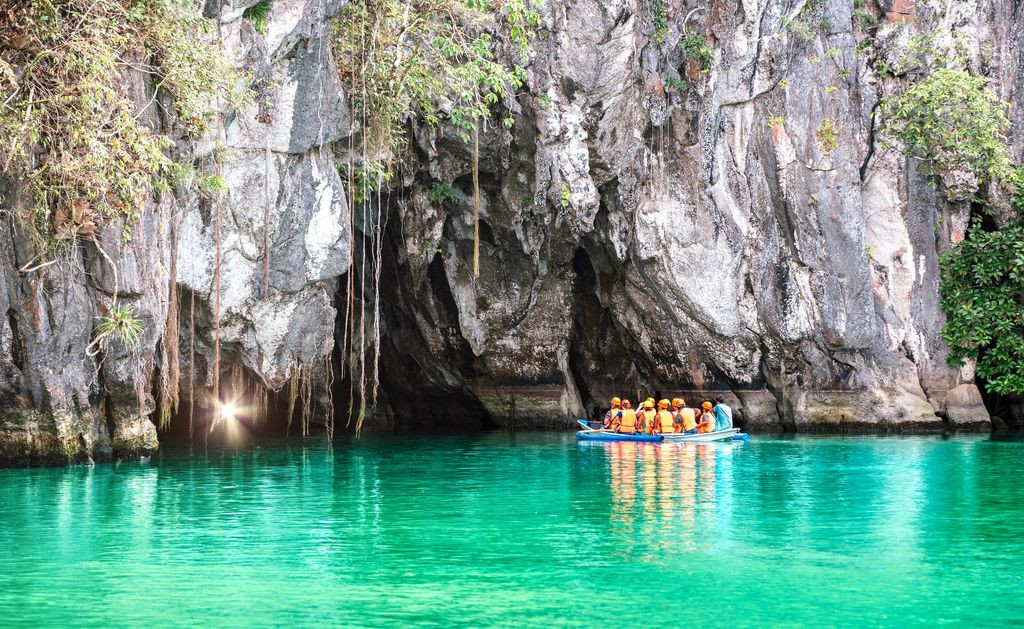 A group of people on a boat at the entrance of the Puerto Princesa Underground River in Palawan, Philippines
A group of people on a boat at the entrance of the Puerto Princesa Underground River in Palawan, Philippines
3.2.2. Why Visit Sabang?
Head to Sabang to visit the Puerto Princesa Underground River, a UNESCO World Heritage Site. Explore the river’s narrow chambers and chasms filled with stalactites and stalagmites. Other activities include paddling through mangroves, bird watching, and hiking.
3.2.3. How to Relax in Port Barton?
Travel to the quiet beach town of Port Barton for some relaxing beach time. Trek to Pamuayan Falls through the jungle with a local guide. Enjoy island-hopping tours to nearby islands and lagoons, with opportunities for swimming, snorkeling, and fresh seafood lunches.
3.2.4. What to Explore in El Nido?
Continue to El Nido for more island-hopping adventures. Explore lagoons, beaches, and hidden spots like Secret Beach. El Nido offers stunning natural beauty and a vibrant island atmosphere.
3.2.5. What to Experience in Busuanga?
Take a ferry to Busuanga, which offers similar attractions to El Nido but with fewer tourists. Enjoy island-hopping tours, hiking, and wreck diving. From Busuanga, you can easily fly back to Manila for your departure.
3.2.6. Palawan Itinerary Summary:
- Days 1-2: Puerto Princesa
- Days 3-4: Sabang
- Days 5-7: Port Barton
- Days 8-10: El Nido
- Days 11-13: Busuanga
- Day 14: Manila
3.3. Vietnam: Culture and Heritage
This Southeast Asia travel itinerary focuses on cultural sites in Vietnam, perfect for history and culture enthusiasts. It does not include beach stays but offers a rich exploration of Vietnam’s heritage. Start in Hanoi, explore the northern territories, and make your way south along the coast.
3.3.1. What to See in Hanoi?
Begin your trip in Hanoi with a 2-day tour to Sapa. Travel by bus or overnight sleeper train to Lao Cai. Trek through the mountains with a local Hmong guide, explore rice paddies, and experience the local Hmong culture.
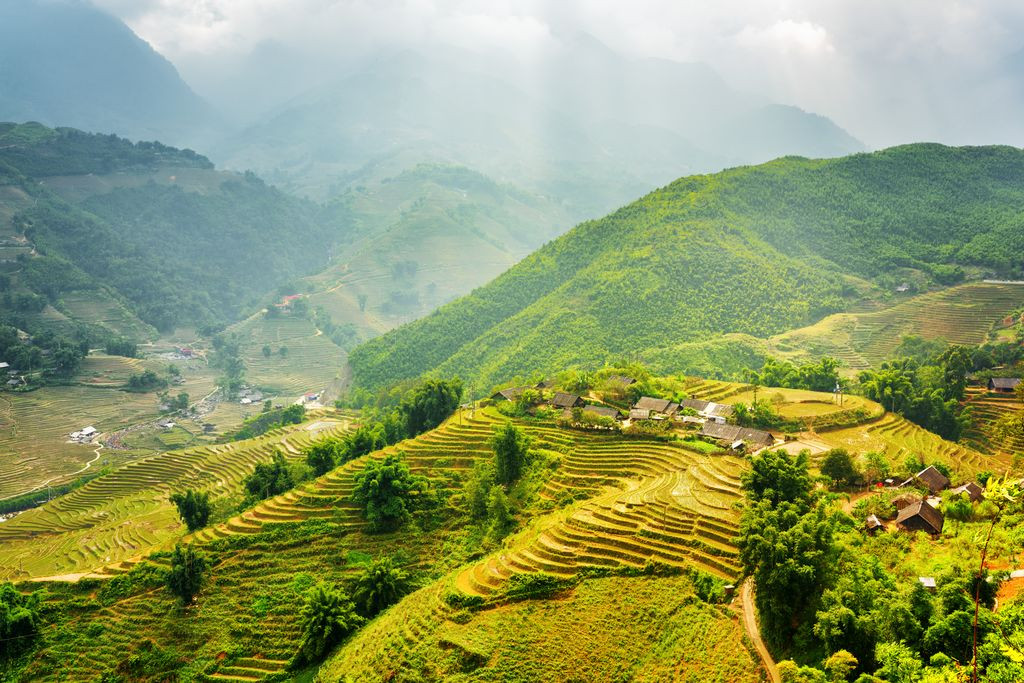 The green rice terraces in Sapa, Vietnam
The green rice terraces in Sapa, Vietnam
3.3.2. How to Explore Hanoi’s Cultural Sites?
Spend a few days in Hanoi exploring cultural sites and diving into the street food scene. Visit Hoan Kiem, the Old Quarter, and try local dishes like pho and banh mi. Explore the Temple of Literature and the Ho Chi Minh Mausoleum.
3.3.3. What to Experience in Halong Bay?
Book a trip to Halong Bay, a UNESCO World Heritage Site. Spend two days and one night aboard a boat, navigating the limestone islands. Visit Tip Top Island and Sung Sot Cave, go kayaking, swim, and try squid fishing.
3.3.4. Why Visit Hue?
Take an overnight sleeper bus to Hue, the former capital. Explore the Imperial City, the abandoned water park, and royal mausoleums. Hue offers a glimpse into Vietnam’s imperial past.
3.3.5. What to Do in Hoi An?
Visit the historic town of Hoi An, the final stop on the itinerary. Explore the night markets, walk along the river, swim at An Bang Beach, and get tailored suits. Hoi An is a popular destination with plenty to offer.
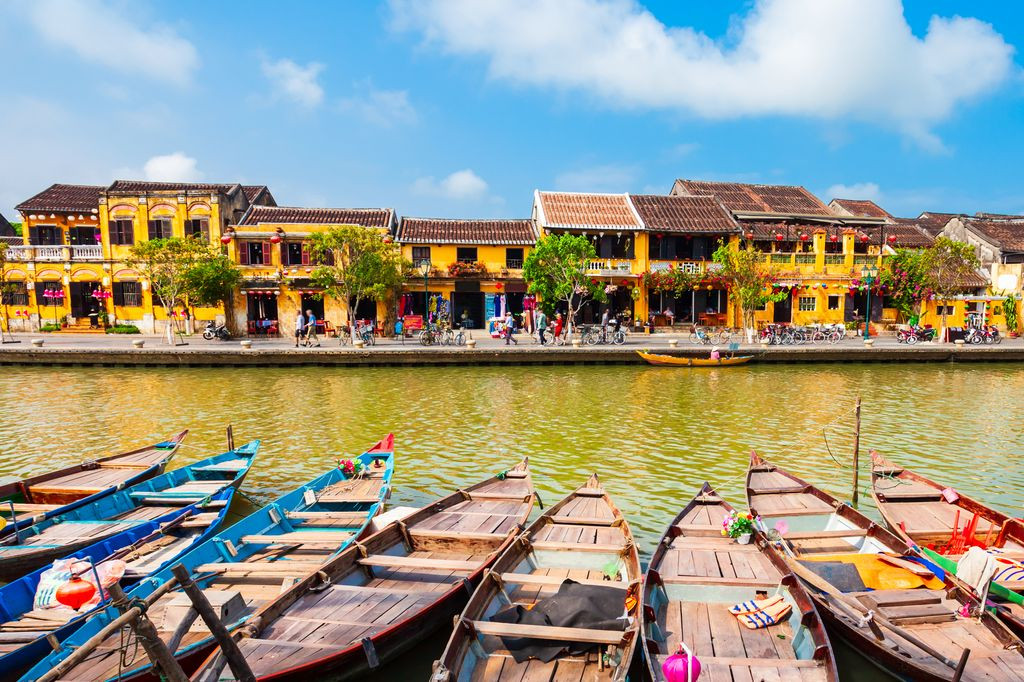 Fishing boats on a river and yellow buildings in the background in Hoi An, Vietnam
Fishing boats on a river and yellow buildings in the background in Hoi An, Vietnam
3.3.6. Vietnam Itinerary Summary:
- Day 1: Hanoi
- Days 2-4: Sapa
- Days 5-7: Hanoi
- Days 8-9: Halong Bay
- Days 10-11: Hue
- Days 12-14: Hoi An
3.4. Malaysia and Borneo: Multicultural Cities and Jungle Adventures
This Southeast Asia travel itinerary combines vibrant multicultural cities with jungle adventures in Malaysia and Borneo. Start in Kuala Lumpur, then head to Penang before flying to Kuching and Sandakan in Borneo.
3.4.1. What to See in Kuala Lumpur?
Spend a couple of days in Kuala Lumpur exploring the Petronas Towers and Petaling Street Market. Visit the Ah Ma House bakery and Batu Caves. Kuala Lumpur offers a blend of modern and traditional attractions.
3.4.2. How to Explore Penang?
Travel to Penang to explore the city and surroundings. Discover local hawker foods, the UNESCO World Heritage Site in Georgetown, and the local beaches. Penang is known for its cultural diversity and culinary delights.
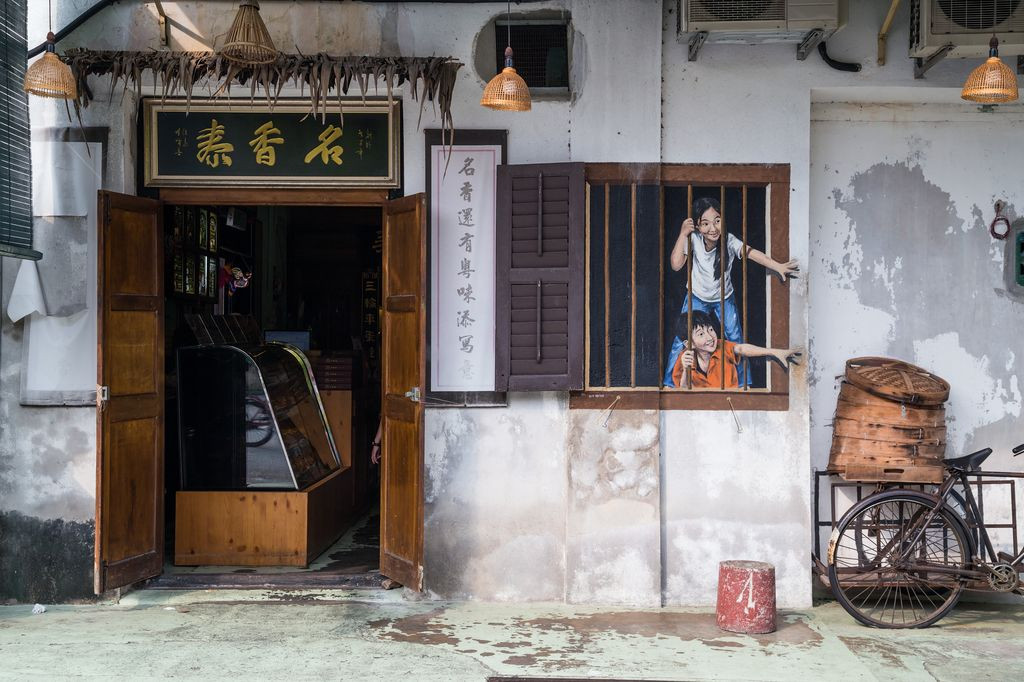 A wall art of two children reaching out from a window in Georgetown, Malaysia
A wall art of two children reaching out from a window in Georgetown, Malaysia
3.4.3. What to Do in Kuching?
Fly to Kuching, the capital of Sarawak, for jungle adventures. Hike in Bako National Park, see orangutans at Semenggoh Nature Reserve, explore local cuisine, and walk along the Kuching Waterfront.
3.4.4. Why Visit Sandakan?
Take a flight to Sandakan on the northeastern coast of Borneo. Enjoy a Kinabatangan River Cruise to see Bornean wildlife, watch turtles laying eggs at Selingan Turtle Island, encounter orangutans at Sepilok Orangutan Rehabilitation Centre, and explore Gomantong Cave.
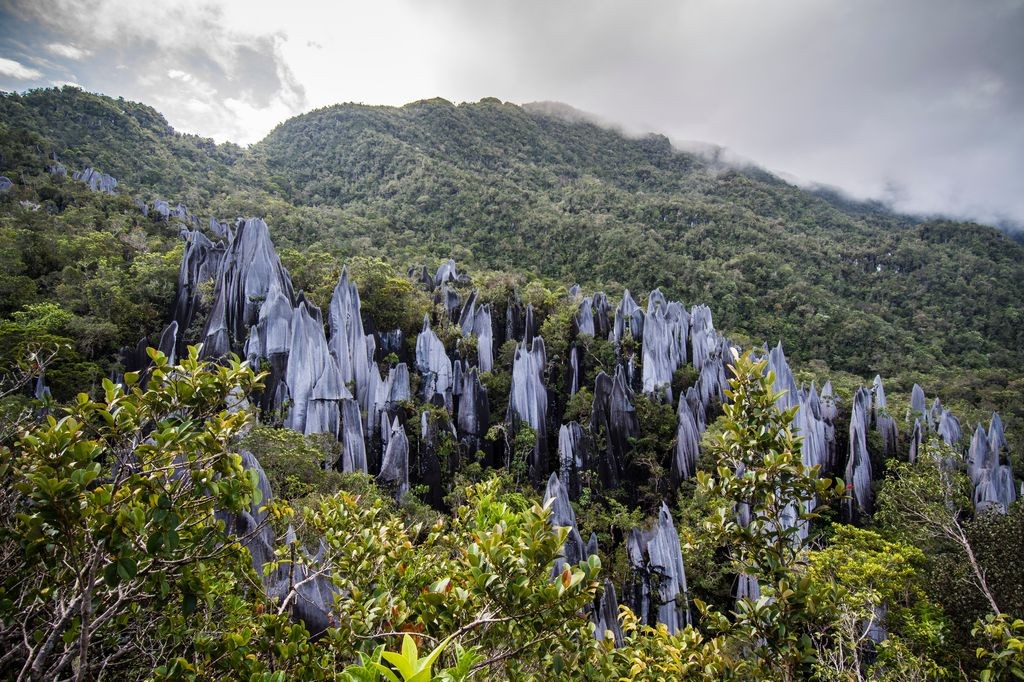 Pinnacles surrounded by trees in Gunung Mulu National Park, Malaysia
Pinnacles surrounded by trees in Gunung Mulu National Park, Malaysia
3.4.5. Malaysia and Borneo Itinerary Summary:
- Days 1-2: Kuala Lumpur
- Days 3-6: Penang
- Days 7-10: Kuching
- Days 11-13: Sandakan
- Day 14: Kuala Lumpur
3.5. Bali and Lombok: Beaches, Temples, and Volcanoes
This Southeast Asia travel itinerary focuses on Bali and Lombok in Indonesia, offering a mix of Hindu temples, surfer vibes, volcano treks, and beautiful beaches. Begin in Bali, then head to Ubud before taking a fast boat to Lombok.
3.5.1. How to Relax in Bali?
Fly into Denpasar Airport and head to a coastal location like Canggu or Seminyak. Avoid Kuta if you prefer a more relaxed atmosphere. Enjoy beaches, surfing, and vibrant nightlife.
3.5.2. What to See in Ubud?
Spend a few days in Ubud, located in the uplands of Bali. Explore rice paddies, rainforests, and visit the local monkey sanctuary. Ubud is known for its tranquil scenery and traditional crafts.
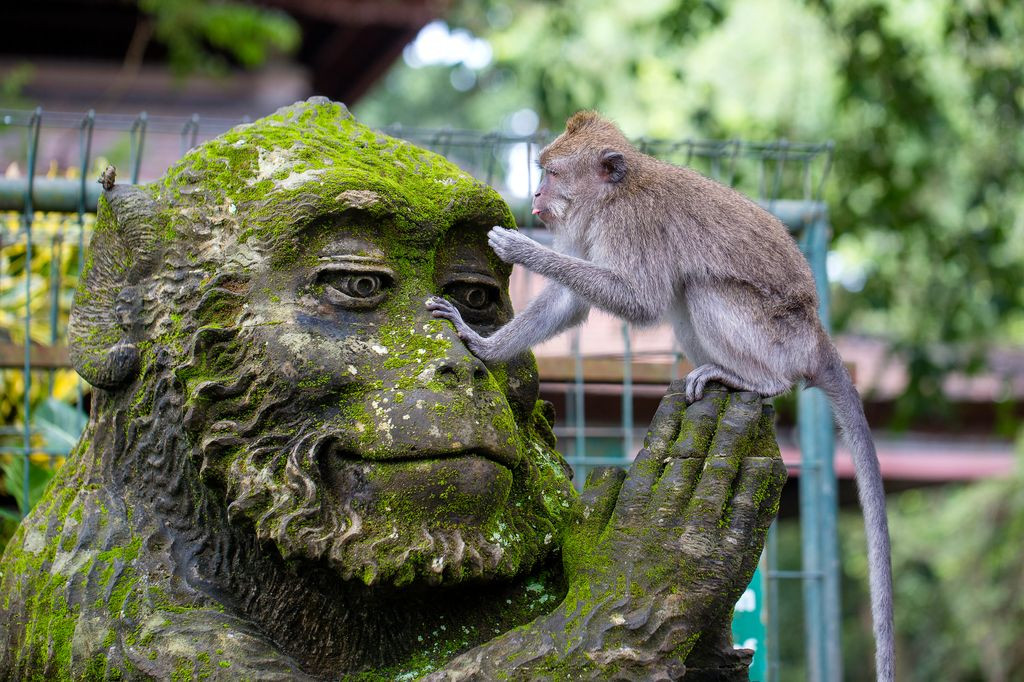 A real monkey sitting on a monkey statue covered in moss in Ubud, Indonesia
A real monkey sitting on a monkey statue covered in moss in Ubud, Indonesia
3.5.3. What to Experience in Lombok?
Take a fast boat to Lombok, which is quieter and more relaxed than Bali. Enjoy white sand beaches, crystal-clear waters, and surfing. Hike to epic waterfalls or trek to the Rinjani volcano for an unbelievable sunrise experience.
3.5.4. Bali and Lombok Itinerary Summary:
- Days 1-4: Bali (Seminyak, Canggu, or other)
- Days 5-7: Ubud
- Days 8-13: Lombok
- Day 14: Bali
4. How Can SIXT.VN Make My Southeast Asia Travel Itinerary Seamless?
SIXT.VN offers a range of services to ensure your Southeast Asia travel itinerary is seamless and stress-free. From airport transfers and hotel bookings to guided tours and local support, we’ve got you covered. With SIXT.VN, you can focus on enjoying your trip while we take care of the logistics.
4.1. What Airport Transfer Services Does SIXT.VN Offer?
SIXT.VN provides reliable and convenient airport transfer services in major Southeast Asian cities. Our professional drivers will meet you at the airport and transport you to your hotel in comfort. This service ensures a smooth start to your trip and eliminates the hassle of navigating public transportation or finding a taxi.
4.2. How Can SIXT.VN Help with Hotel Bookings?
SIXT.VN offers a wide selection of hotels to suit every budget and preference. Whether you’re looking for a luxury resort or a budget-friendly guesthouse, we can help you find the perfect accommodation. Our easy-to-use booking platform allows you to compare prices and amenities, ensuring you get the best deal.
4.3. What Guided Tours Does SIXT.VN Provide?
SIXT.VN offers a variety of guided tours to help you explore Southeast Asia’s top attractions. Our knowledgeable guides will take you to the must-see sights and provide insights into the local culture and history. Whether you’re interested in temples, historical sites, or natural landscapes, we have a tour to match your interests.
4.4. How Does SIXT.VN Provide Local Support?
SIXT.VN provides local support to assist you during your trip. Our team is available to answer your questions, provide recommendations, and help you resolve any issues that may arise. We are committed to ensuring you have a safe and enjoyable travel experience. Contact us at Hotline/Whatsapp: +84 986 244 358.
5. What are Some Essential Travel Tips for a 2-Week Southeast Asia Travel Itinerary?
Planning a Southeast Asia travel itinerary for 2 weeks requires careful consideration of various factors to ensure a smooth and enjoyable trip. From packing essentials and understanding local customs to staying safe and healthy, these tips will help you make the most of your adventure.
5.1. What Should I Pack for My Southeast Asia Trip?
Pack light, breathable clothing suitable for warm and humid weather. Include essentials such as sunscreen, insect repellent, a hat, and sunglasses. Don’t forget comfortable walking shoes for exploring cities and temples. A universal adapter is essential for charging your electronic devices.
5.2. How Can I Stay Safe and Healthy in Southeast Asia?
Stay hydrated by drinking plenty of bottled water. Be cautious with street food and ensure it’s cooked fresh. Use insect repellent to protect against mosquito bites. Consult your doctor about necessary vaccinations and medications before your trip. Always be aware of your surroundings and take precautions against theft. According to the Centers for Disease Control and Prevention (CDC), it is crucial to stay informed about potential health risks and necessary precautions when traveling to Southeast Asia (CDC, 2024).
5.3. How Can I Respect Local Customs and Traditions?
Dress modestly when visiting temples and religious sites. Remove your shoes before entering temples and homes. Avoid pointing your feet at people or religious objects. Be respectful of local customs and traditions, and always ask for permission before taking photos of people. Learning a few basic phrases in the local language can also enhance your interactions.
5.4. What are Some Budgeting Tips for Southeast Asia Travel?
Southeast Asia is generally an affordable travel destination. Accommodation, food, and transportation can be relatively inexpensive. Plan your budget in advance and track your expenses. Take advantage of local transportation options such as buses and trains to save money. Eat at local eateries and street food stalls for affordable and delicious meals.
5.5. How Can I Stay Connected During My Trip?
Purchase a local SIM card upon arrival to stay connected and avoid roaming charges. Many cafes and hotels offer free Wi-Fi. Consider investing in a portable Wi-Fi device for reliable internet access on the go. Stay in touch with family and friends using messaging apps and social media.
6. What are Some Common FAQs About a 2-Week Southeast Asia Travel Itinerary?
Planning a 2-week Southeast Asia travel itinerary can raise many questions. Here are some common FAQs to help you prepare for your trip.
6.1. Is 2 Weeks Enough Time to See Southeast Asia?
Yes, 2 weeks is enough time to experience a snapshot of Southeast Asia. Focus on one or two countries to make the most of your trip.
6.2. What is the Best Time to Visit Southeast Asia?
The best time to visit depends on the region. Generally, the dry season (November to March for mainland Southeast Asia and April to October for maritime Southeast Asia) is recommended.
6.3. How Much Does a 2-Week Southeast Asia Trip Cost?
The cost of a 2-week Southeast Asia trip varies depending on your travel style and destinations. Budget travelers can expect to spend around $50-$100 per day, while mid-range travelers may spend $100-$200 per day.
6.4. What are the Must-See Destinations in Southeast Asia?
Must-see destinations include Bangkok, Chiang Mai, Angkor Wat, Halong Bay, and the beaches of Palawan and Lombok.
6.5. Do I Need a Visa for Southeast Asia?
Visa requirements vary depending on your nationality and the country you plan to visit. Check the visa requirements for each country before your trip.
6.6. What Vaccinations Do I Need for Southeast Asia?
Consult your doctor about recommended vaccinations for Southeast Asia, such as hepatitis A, typhoid, and malaria.
6.7. Is it Safe to Travel in Southeast Asia?
Southeast Asia is generally safe for travelers. However, it’s important to be aware of your surroundings and take precautions against theft and scams.
6.8. What Should I Wear in Southeast Asia?
Pack light, breathable clothing suitable for warm and humid weather. Dress modestly when visiting temples and religious sites.
6.9. How Can I Get Around in Southeast Asia?
Local transportation options include buses, trains, taxis, and tuk-tuks. Consider renting a scooter for exploring some areas.
6.10. What is the Local Currency in Southeast Asia?
The local currency varies depending on the country. Common currencies include the Thai Baht, Vietnamese Dong, Cambodian Riel, and Indonesian Rupiah.
Planning a 2-week Southeast Asia travel itinerary can be an exciting and rewarding experience. With careful planning and the right resources, you can create an unforgettable trip. Let SIXT.VN help you make your dream Southeast Asia adventure a reality. Contact us at Address: 260 Cau Giay, Hanoi, Vietnam, Hotline/Whatsapp: +84 986 244 358, or visit our website: SIXT.VN.



